















Toyota Celica |
|---|
|
| Topic Navigation |
|---|
|
Wikipedia: Toyota Celica
Page Sections History Reference Desk Photographs Documents 1982 Specifications 1983 Specifications Merchandise |
Awards and acknowledgements include:
A Complete Guide to Used Cars (1995 Edition) Best Late-Model Bet in the Sporty Coupe category (model years 1986-1993)
History
The following section is an excerpt from Wikipedia's Toyota Celica page on 20 May 2018, text available via the Creative Commons Attribution-ShareAlike 3.0 Unported License.
The Toyota Celica (Japanese: トヨタ セリカ Toyota Serika) was an automobile produced by Toyota from 1970 to 2006. The Celica name was ultimately derived from the Latin word coelica meaning "heavenly" or "celestial". In Japan, the Celica was exclusive to Toyota Japanese dealerships Toyota Corolla Store.
Throughout its life span the Celica has been powered by various four-cylinder engines. The most significant change occurred in August 1985, when the car's drive layout was changed from rear-wheel drive to front-wheel drive. During the first three generations, American market Celicas were powered by various versions of Toyota's R series engines. The four-wheel drive turbocharged model called GT-Four worldwide (All-Trac Turbo in the US) was produced from 1986 to 1999. Variable valve timing came in certain Japanese models starting in December 1997, and became standard in all models from 2000-on. Through seven generations, the model has gone through many revisions. It has also spawned design forks that were spun off to become separate models, including the Toyota Celica Supra (later Toyota Supra). The Celica was available as notchback and liftback coupes, as well as a convertible.
First generation (A20, A30; 1970–1977)
Displayed at the October 1970 Tokyo Motor Show and marketed from December of the same year, the Celica was a two-door hardtop coupe that emphasized styling and driving enjoyment based on a platform shared with the Toyota Carina sedan which is one size above the Toyota Corolla. This car was aimed at the North American market and was Toyota's response to the 1964 Ford Mustang (Pony car) which also was a standard sedan (Ford Falcon) with stylized 2+2 bodywork.
Second generation (A40, A50; 1977–1981)
The second-generation Celica was released for 1978 model year (production began in late 1977), and was again available in both coupé and liftback forms. Interestingly, it was designed in the United States by Toyota's Calty Research Design studio in California. The coupe was no longer a true hardtop; both coupé and liftback had frameless door glass but featured a thick "B" pillar. David Stollery was responsible for its design.
From 1979 to 1981 the Griffith company in the US offered a Targa-style convertible conversion to the coupé. They were called the SunChaser and had a removable Targa top and a folding rear roof, much like the '67 Porsche 911 soft-window Targa. These were Toyota approved and sold through Toyota dealers. Over 2000 were produced. In Germany, the same SunChaser version but also a full convertible and a traditional targa with a fixed rear window (called the TX22) were offered. Conversions were Toyota-approved and carried out from mid-1980 by a company called Tropic.
Third generation (A60; 1981–1985)
August 1981 saw the introduction of the third-generation Celica. The car was initially available in notchback coupe and liftback forms with many buyers preferring the liftback. The US-made convertible came in 1984. Styling was changed considerably from previous models and power was provided by a 2.4 L 22R or 22R-E engine in all North American models, while smaller engines were used in other countries. The 2.4 L became the biggest 4-cylinder engine offered in any Celica ever. Other engines were the 1.6-liter 4A, 1.6-liter 2T, 1.8-liter 3T, 1.8-liter 4T, 1.8-liter 1S, 2.0-liter 2S, 2.0-liter 18R-G and 2.0-liter 21R, depending on the particular market. Trim levels for the Japanese market were SV, ST, ST-EFI, SX, GT, and GT Rally. Rack and pinion steering was offered for this generation Celica.
Fourth generation (T160; 1985–1989)
In August 1985 the Celica was changed completely. It was an all-new vehicle with front wheel drive, a rounded, flowing body and new 2.0 L four-cylinder engines. The Celica was no longer built on the Toyota A platform, and instead realigned with the Toyota T platform underpinning the Toyota Corona. The Toyota A platform was now exclusive to the Toyota Supra. The coupe bodystyle in Japan was used only for the Corona coupe, sold only at Japanese Toyota dealerships Toyopet Store without the retractable headlights. An optional feature only offered on the Corona coupe was four-wheel steering, not shared with the Celica during this generation, however, the turbocharged engine on the Celica was not installed in the Corona coupe.
Fifth generation (T180; 1989–1993)
The fifth generation Celica was introduced in September 1989 for the 1990 model year. The Celica received new Super Round organic styling, upgraded wheels and tires, more powerful GT-Four (All-Trac Turbo in the US) with better cooling system, and for the Japanese market only, the four-wheel steering (4WS) models. Toyota engineers claimed that the round styling and lack of straight edges increased strength without adding weight. The styling was later copied by other manufacturers. Japanese market models were now S-R, Z-R, GT-R, Active Sports (first Toyota with Toyota Active Control Suspension), and GT-Four. The S-R and Z-R were powered by a 3S-FE engine, while the GT-R and Active Sports came with a 3S-GE. The 3S-GTE in the GT-Four features an air-to-air intercooler and CT26 twin entry turbo to eliminate exhaust gas interference. The Japanese market GT-Four has 165 kW (221 hp) and 304 N⋅m (224 lb⋅ft) of torque, a result of more aggressive ignition advance and ceramic turbine. The Full-time 4WD system in the GT-Four has viscous coupling limited slip center differential and Torsen rear differential.
Sixth generation (T200; 1993–1999)
In October 1993, Toyota launched the sixth-generation Celica for the 1994 model year. Styling of the new Celicas was acclaimed by most publications as "Supra-esque" with four round headlights, and did also provide a visual resemblance to the Soarer introduced in 1991. Celicas were available in either notchback coupe or liftback form, the convertible would come later. New safety equipment in the form of driver (and then later passenger) airbags were standard, and anti-lock brakes were available on all models. Many Celicas also sported CFC-free air conditioning.
Seventh generation (T230; 1999–2006)
In July 1999, Toyota began production of the seventh-generation Celica, with European sales beginning late that year. It closely resembled the XYR concept with the exception of the front bumper and rear spoiler, while omitting the previously available coupe body style. The 2000 model year Celica was an element of Toyota Project Genesis, an effort to bring younger buyers to the marque in the United States. Toyota took time to lighten the car and lower cost wherever possible. Power window and door lock controls were placed in the center console so only 1 set was necessary for both doors. Initial sunroofs were made of polymer plastic instead of the traditional glass. This generation was assembled by Kanto Auto Works at its Higashi-Fuji plant in Susono, Shizuoka Prefecture, Japan.
Reference Desk
The Crittenden Automotive Library's "Reference Desk" is a collection of materials that cannot be shared due to copyright restrictions. Information from these resources, however, can be shared. Go to the Reference Desk page for more information.
| Type | Title |
|---|---|
2007  Book Book | Celica & Supra: The book of Toyota's sports coupés by Brian Long; Veloce |
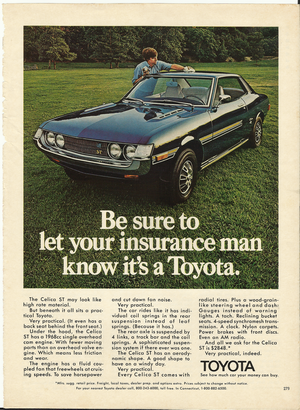 |
ST
View Toyota Celica ST Advertisement - 19.6MB |
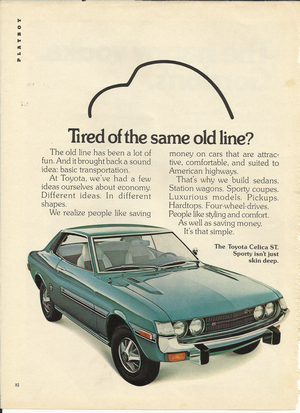 |
ST
View Toyota Celica ST Advertisement - 15.4MB |
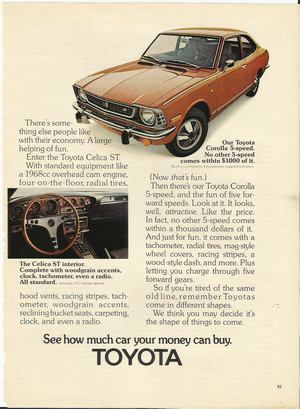 |
ST
View Toyota Celica ST Advertisement - 16.8MB |
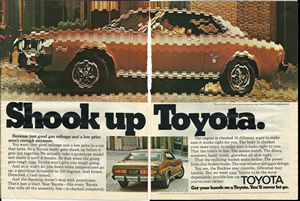 |
View Toyota Celica Advertisement - 34.5MB |
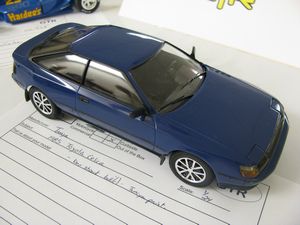 |
1985 Tamiya kit Photo ©2009 Bill Crittenden 2009 Summer NNL hosted by 
View photo of 1985 Toyota Celica Tamiya Model - 3,293KB |
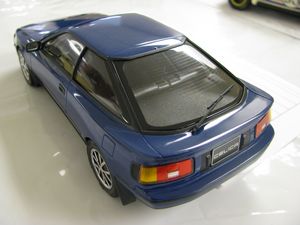 |
1985 Tamiya kit Photo ©2009 Bill Crittenden 2009 Summer NNL hosted by 
View photo of 1985 Toyota Celica Tamiya Model - 3,259KB |
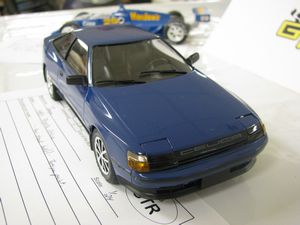 |
1985 Tamiya kit Photo ©2009 Bill Crittenden 2009 Summer NNL hosted by 
View photo of 1985 Toyota Celica Tamiya Model - 2,794KB |
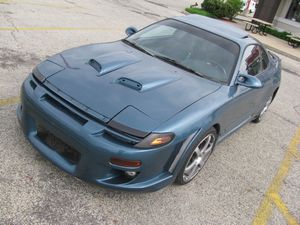 |
Custom Photo ©2010 Bill Crittenden View photo of Custom Toyota Celica - 4,984KB |
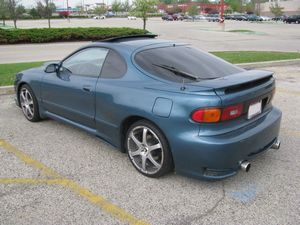 |
Custom Photo ©2010 Bill Crittenden View photo of Custom Toyota Celica - 4,401KB |
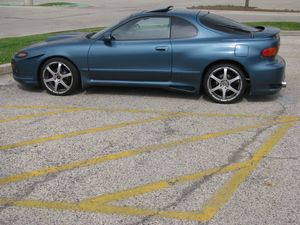 |
Custom Photo ©2010 Bill Crittenden View photo of Custom Toyota Celica - 5,304KB |
| Date | Document Name & Details | Documents |
|---|---|---|
| classified date 1990 | SwRI Airbag Deployment Investigation 1990 Toyota Celica National Highway Traffic Safety Administration | PDF - 4.8MB - 61 pages |
| classified date 1992 | Calspan On-Site Nondeployed Air Bag Investigation Vehicle - 1990 Toyota Celica National Highway Traffic Safety Administration | PDF - 49.1MB - 92 pages |
| classified date 1991 | Airbag Investigation 1991 Toyota Celica 2-door coupe National Highway Traffic Safety Administration | PDF - 4.9MB - 54 pages |
| classified date 1993 | In-Depth Accident Investigation 1991 Toyota Celica 2-door coupe National Highway Traffic Safety Administration | PDF - 34.7MB - 178 pages |
| classified date 1993 | On-Site Air Bag Investigation 1991 Toyota Celica ST National Highway Traffic Safety Administration | PDF - 7.4MB - 95 pages |
| November 1997 | On-Site Adaptive Equipment Investigation Vehicle - 1992 Toyota Celica National Highway Traffic Safety Administration | PDF - 1,269KB - 18 pages |
| February 1999 | Redesigned Air Bag Special Study (RABSS) SCI Technical Summary Report RABSS Vehicle - 1998 Toyota Celica GT Convertible National Highway Traffic Safety Administration | PDF - 211KB - 10 pages |
| June 2005 | Child Safety Seat Fatality/ Vehicle to Object 2000 Toyota Celica National Highway Traffic Safety Administration | PDF - 2,213KB - 19 pages |
| Model | Supra |
|---|---|
| 0-60 mph* | 8.9 seconds |
| 80-0 mph* | 270 feet |
| Cornering Capability* | 0.785g |
| Interior Noise @ 70mph* | 73 dBA |
| Fuel Economy* | 20.0 mpg |
| Model | GT-S |
|---|---|
| 0-60 mph* | 11.8 seconds |
| 80-0 mph* | 298 feet |
| Cornering Capability* | 0.804g |
| Interior Noise @ 70mph* | 73 dBA |
| Fuel Economy* | 23.0 mpg |
| Type & Item # | Name | Details |
|---|---|---|
| Model Kit - MPC 1-0881 | Toyota Supra | 1:25 scale, Celica Supra |
